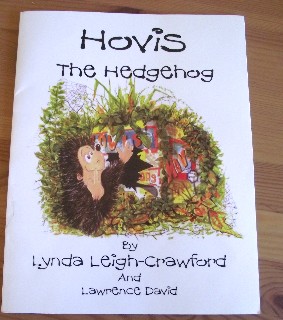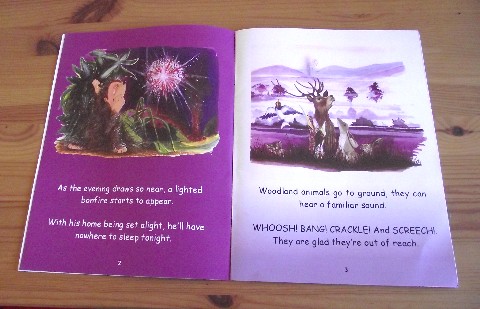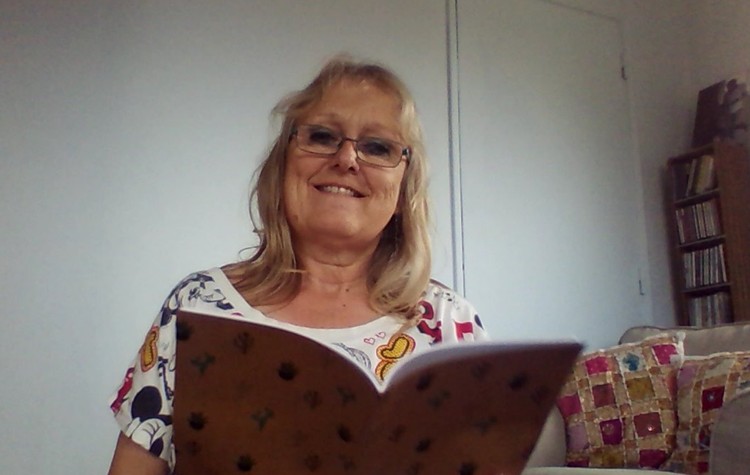Reading to Children
Reading to children is a skill that can be easily acquired. We all love to tell stories of our own experiences and the more dramatic the experience the more we enjoy the story. The reason we can do this so well is because we are eager to share our story. It’s about something that has happened to us – it could be funny, distressing or surprising – and we can’t wait to tell people even if those same people are not so keen to listen!
We want our listeners to be able to see, in their own minds, what we can so clearly see in our own mind. This is the basis of good story telling- word pictures.
Important points to remember when reading to children
Word pictures
If I say ‘Christmas Tree’ every one listening to me gets an image of a Christmas tree in their mind. My tree might be six feet tall and pink, yours might be tree feet tall and green. It’s my job, as the story teller to try and get you to have a similar picture in your mind as me. So I’ll add some more words, I’ll say, ‘six feet tall, pink Christmas tree’. Now we have similar pictures and you know more or less what I am talking about. As the story teller I have to try and achieve this for every thought or picture that I have. As well as using words I use my voice to get my meaning across to the listener.
Clear Words
Children don’t always concentrate as well as we would like so it’s essential that the words you speak are clear. Make sure you open your mouth wide enough for the sound to get out and make sure that you sound all the final consonants in a word, for example the ‘d’ at the end of ‘and’ or the ‘t’ at the end of ‘not’.
Repetition
Sometimes, of course, children want the same bed time story over and over again. Try to find out what it is about the story that the child loves, perhaps they can see something different in the story that you haven’t discovered yet. Perhaps it makes them feel safe just before they go to sleep, maybe it brings back pleasant memories. If they can give you a new way of looking at the story you will find it more enjoyable to read aloud.
Choice of book
If you’re not sure what book choose when you want to read to children, ask them if they have a favourite they’d like to hear again. It’s better to read something familiar than choose something which might be unsuitable, the last thing you want to do is give them nightmares!
Before you start to read aloud make sure that both you and your child are comfortable. It is very irritating for the reader if the listener keeps fidgeting and the same applies if the story teller is uncomfortable.
If your child isn’t familiar with the story start by discussing the cover. Ask your child what they think the book is about by looking at the illustration on the cover. If it’s possible let your child turn the pages (perhaps not all the time) this will make them feel involved in the story telling process.
Pictures
If there are pictures in the book you are reading to children or if it’s a picture book, make sure that your child can see the pictures without you both having to move too much. Don’t be in too much of a hurry to continue with the text, children like to have time to study the illustrations and quite often want to comment on the picture before you continue.

In this example discuss the hedgehog's name, does the child think it is a good name, would they give the hedgehog a different name? Does the hedgehog look happy? What is he doing?
Familiar book
If the story is familiar to your child, if it is a story that they have heard over and over again, pause very so often and let them tell you what is going to happen next. If the story is one that you’ve read aloud more than once, or twice or even three times, try to sound as enthusiastic as you did the first time.
Start the story
Remember to say the title of the book and who it’s written by, for example, 'Alice's Adventures in Wonderland by Lewis Carroll’.
Look at the child as often as possible while you are reading aloud, especially the first sentence of each paragraph. This lets your child share the experience and gives you a chance to check if they are understanding and enjoying what you are reading to them. If they look fed up or confused, stop and ask them why.

Children love to look at the illustrations so make sure they can see the pictures and give them time to look at them and then discuss them. Ask them why they think Hovis is crying? What is it on the sky? Can they name the animals in the second pictures?
Reading quickly
Be very careful not to read too quickly. When we read to ourselves our brain and eyes can read very quickly but you need to remember that when you’re reading aloud your mouth needs time to open and shut. Your child also needs time to take in what you have read to them. If you’re not careful you will be reading the third paragraph and your child will still be trying to picture and understand the second paragraph.
Expressive speech
Use expressive speech to make the story sound even more interesting and exciting. Slow your speech down especially for serious parts of the story. Make good use of pace – faster for exciting parts of the book.
Pitch should be varied, if you are reading a book full of suspense, lower your voice, if you need to sound happy and excited, higher the pitch of your voice.
Pausing is very important. Pause when you need to make a point. The grammar in the book will usually dictate when you pause, for example full stops and commas, but you can also pause before or after an important word. This makes the word stand out.
Children don’t always understand all the vocabulary in a book, even if it is written for their age group. If you make sure that you use facial expressions and that your child can see your face they will pick up the meaning of the words. If you are reading something sad – look sad, if it’s happy – look happy.
Have fun
If you read aloud to your child you are sharing an experience with them, you are not only bonding with them, you are entertaining them and teaching them. You are showing them, by example that books and stories are fun.
Video course
My video course below has a section about reading aloud to children, please click and watch the free lessons. You can then purchase the whole course if you would like to learn more.
Voice acting and how to master the art of reading aloud

The most important skill required for voice acting or voice over work is the ability to read aloud for performance. This is a wonderful skill and one that can also be used to read aloud to children, friends, elderly or sick relatives etc. We can all read - some better than others - and because of this we all think we can read aloud. The truth is, we can't. Some of us struggle. Reading aloud is a skill that anyone can learn but there are basics steps to go through. Most voiceover work is with an ordinary voice with clarity and expression. I can teach you how to improve your reading aloud skills so that you will be able to read aloud serious business items, adverts, children's books, classic novels, modern literature, poetry, news bulletins etc.
This course does NOT teach you the technical aspects of recording - I know very little about microphones or sound proofing but I do know that you could have the best recording facilities in your town but if your voice isn't up to the job it will be waste of a good facility! This course gives you plenty of opportunities to practice along with me, after all you can't improve your reading aloud skills unless you read aloud!